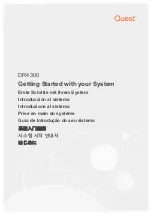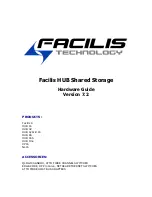
Chapter 3. IBM System Storage DS3500 Storage System planning tasks
45
Draft Document for Review March 28, 2011 12:24 pm
7914DS3KPlanning_090710.fm
It is always a best practice to distribute high-speed adapters across several buses. When you
use PCI adapters, make sure that you first review your system specifications. Certain systems
include a PCI adapter placement guide.
The number of adapters you can install depends on the number of PCI slots available on your
server, but also on what traffic volume you expect on your SAN. The rationale behind multiple
adapters is either redundancy (failover) or load sharing.
Failover
When multiple adapters are installed on the host system and used with a multipath driver, the
multipath driver checks to see if all the available paths to the storage server are still
functioning. In the event of an HBA or cabling failure, the path is changed to the other HBA,
and the host continues to function without loss of data or functionality.
In general, all operating systems support two paths to the DS3500 Storage System. Microsoft
Windows 2003 and 2008 and Linux support up to four paths to the storage controller. AIX with
MPIO can support more than four paths to the controller modules however, too many paths
can delay failover when it actually is needed due to a controller failure. Care should be taken
to ensure that there are enough redundant paths without having too many. In general having
four paths provides good level of redundancy for load balancing and still allows for timely
controller failover when the need arises.
Load balancing
Load balancing or load sharing means distributing I/O requests from the hosts between
multiple adapters, which can be done by assigning LUNs to both the DS3500 controllers A
and B alternatively (see also 3.3.6, “Logical drives and controller ownership” on page 63).
Figure 3-10 shows the principle for a load-sharing setup. A multipath driver checks all
available paths to the controller. In Figure 3-10, that is two paths (red and blue). The driver
forces the data down all paths in a
round-robin
scheme, which means that it does not really
check for the workload on a single path, but moves the data down in a
rotational manner
(round-robin).
Figure 3-10 Load sharing approach for multiple HBAs
The RDAC drivers for Linux supports round-robin load balancing.
Summary of Contents for DS3500
Page 2: ......
Page 5: ...iii Draft Document for Review March 28 2011 12 24 pm 7914edno fm ...
Page 789: ......
















































